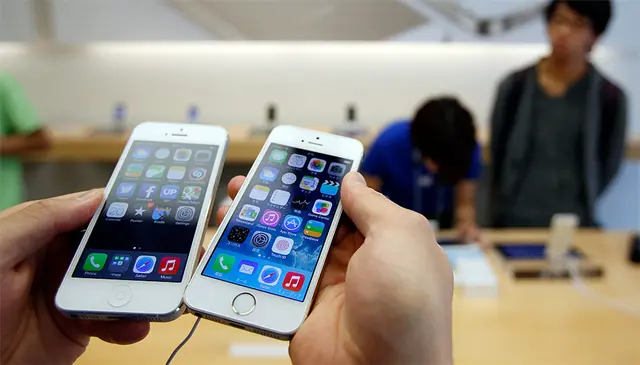(THE WALL STREET JOURNAL) The topic “cheapest iPhone in history” is trending today on Chinese social network Weibo. But that doesn’t necessarily meanApple’s new 4-inch iPhone SEis what most Chinese consumers want.
A set of iPhone SE handsets are seen on display during a media event at Apple headquarters in Cupertino, California on March 21, 2016.AGENCE FRANCE-PRESSE/GETTY IMAGES
One in five Chinese iPhone buyers last year chose 4-inch devices, with the rest opting for larger, pricier iPhones, says CK Lu, an analyst at market research firm Gartner. That means that while there is a healthy market for a device like an iPhone SE inApple’s largest market outside the Americas, it’s hardly likely to be a blockbuster in the country. East Asian mobile junkies tend to favor larger smartphone screens, the better to watch Korean soap operas.
Apple Vice President Greg Joswiak had acknowledged that most of their customers prefer larger phones as he unveiled the iPhone SEon Monday. But he said that 4-inch devices remain an important part of the business, with Apple selling 30 million of them last year.
The online reception was lackluster in ChinaTuesday, with many Weibo commentators carping on the similar design to the previous iPhone 5S rather than expressing glee over the low price or features.
In China, phone shoppers have no shortage of budget options, with domestic brands Huawei and Xiaomi offering devices that rival iPhones in key specs at deep discounts. So consumers willing to shell out extra for Apple generally are looking for luxury, rather than anything that their peers might ridicule as a “cheap” iPhone.
Apple’s previous low-cost 4-inch handset, the iPhone 5C, had flubbed largely due to image issues in China and other countries from its multicolored plastic casing, according to analysts.
On WeiboTuesday, there were some signs that some users had relegated the iPhone SE to “cheap iPhone” status. Some immediately questioned whether the iPhone SE’s similar design to the iPhone 5S meant it was built with recycled components – a false conspiracy theory, to be sure, but a reminder that Chinese buyers haven’t quite forgiven and forgotten the warranty scandal of 2013. During that episode, it emerged that when consumers in China had broken their phones,Apple had been giving them refurbished replacementsinstead of brand-new ones as the company had been doing in other countries.
Some online wags also christened the iPhone SE, which comes in rose gold, the “Red iPhone” – a nod to budget smartphone maker Xiaomi’s most budget line, Redmi.
Of course, Apple hardly needs to win over all buyers for the iPhone SE to be a success. Its next flagship iPhone is expected to include cutting-edge features to draw the most discriminating shoppers. The iPhone SE can fill a smaller niche in China’s 434 million-unit smartphone market.
“In general, users in China like bigger phones,” said IDC’s China head Kitty Fok. “But China is a very big market. Even if in terms of percentage, smaller phones aren’t a major part of the market, it’s still a lot of phones.”
 简体中文
简体中文

